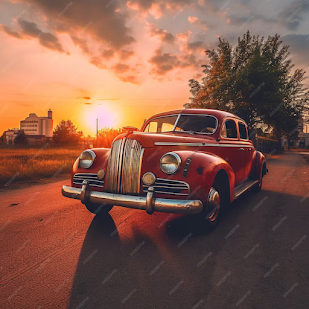Classic Car Restoration: Choosing Between Original Parts and Aftermarket Parts
Restoring a classic car is a labor of love, requiring meticulous attention to detail and a keen eye for authenticity. One of the most crucial decisions during the restoration process is choosing between original parts and aftermarket parts. Each option has its merits and considerations, making it essential for enthusiasts to weigh their choices carefully.
In this blog, we'll delve into the factors to consider when deciding between original and aftermarket parts for classic car restoration projects.
Authenticity vs. Affordability
One of the primary considerations when choosing between original and aftermarket parts is authenticity. Original parts, sourced from the same era as the vehicle, offer the highest level of authenticity and historical accuracy. They ensure that the restored car maintains its originality, making it a valuable piece of automotive history. However, original parts can be scarce and expensive, especially for rare or obscure models.
On the other hand, aftermarket parts are manufactured as reproductions of original components. While they may not possess the same level of authenticity as original parts, they often offer a more affordable alternative for classic car enthusiasts. Aftermarket parts are more readily available and come in a variety of options, allowing for greater flexibility in customization and restoration projects.
Quality and Fitment
Another crucial factor to consider is the quality and fitment of the parts. Original parts are designed to exact specifications and are more likely to offer a seamless fit with the rest of the vehicle. They have undergone rigorous testing and quality control measures, ensuring optimal performance and longevity.
However, aftermarket parts vary in quality depending on the manufacturer. While some aftermarket suppliers prioritize accuracy and craftsmanship, others may produce parts of inferior quality. It's essential to research reputable aftermarket suppliers and read reviews to ensure that the parts meet your standards. Additionally, aftermarket parts may require additional modification or adjustment to achieve the desired fit, adding to the overall time and cost of the restoration project.
Availability and Accessibility
Availability is another factor to consider when choosing between original and aftermarket parts. Original parts for classic cars can be challenging to find, especially for rare or discontinued models. Sourcing original parts may require extensive research, networking with other enthusiasts, and scouring salvage yards and specialty shops.
In contrast, aftermarket parts are more readily available and accessible. They can be purchased from a variety of suppliers, both online and in brick-and-mortar stores. This accessibility makes it easier to find the parts needed for your restoration project without the hassle of searching for rare originals.
Resale Value and Collectibility
The choice between original and aftermarket parts can also impact the resale value and collectibility of the restored classic car. Vehicles restored with original parts typically command higher prices in the collector's market due to their authenticity and historical significance. Originality adds to the car's provenance and appeal to collectors, making it a valuable investment for enthusiasts.
However, well-executed restoration projects using high-quality aftermarket parts can still retain significant value and appeal to buyers. While aftermarket parts may not carry the same historical significance as originals, they can still result in a visually stunning and mechanically sound restoration that garners attention and admiration from fellow enthusiasts.


Comments
Post a Comment